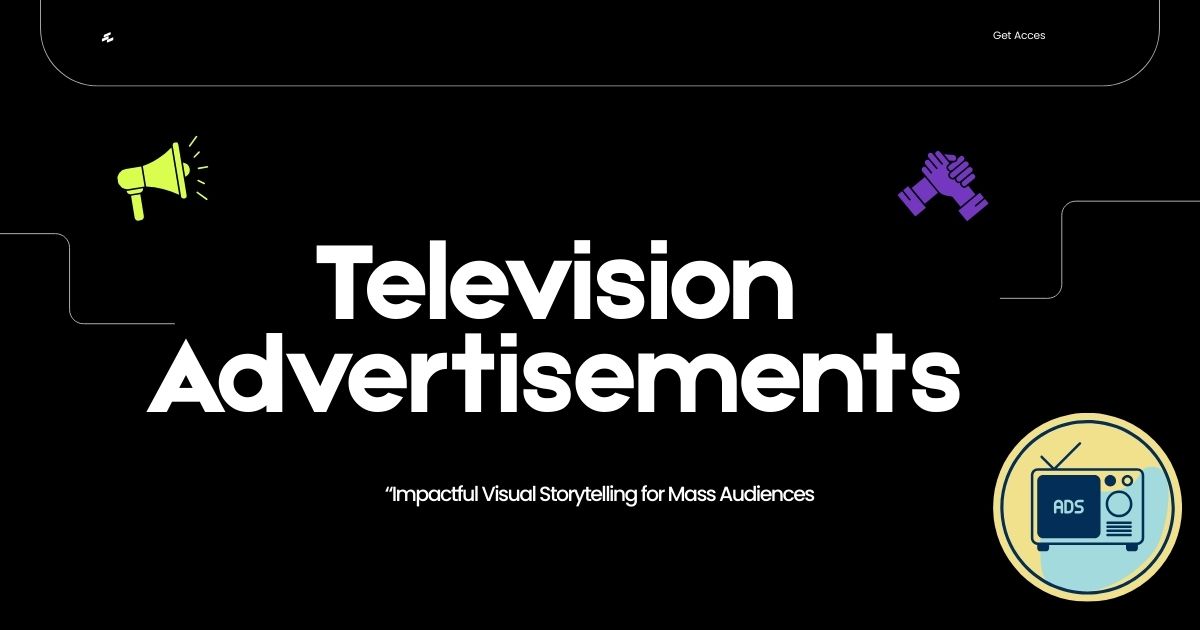Television advertising remains one of the most powerful ways to reach mass audiences, but crafting an effective TV ad requires skill, strategy, and creativity. With viewers bombarded by countless commercials daily, your advertisement needs to cut through the noise and leave a lasting impression.
Whether you’re launching a new product, building brand awareness, or driving sales, understanding how to write a television advertisement can make the difference between a forgettable spot and a campaign that generates real results. The best TV ads combine compelling storytelling with clear messaging, all delivered within tight time constraints.
This guide will walk you through the essential elements of television advertising, from initial concept development to final script polish. You’ll learn proven techniques used by advertising professionals and discover how to create commercials that resonate with your target audience and achieve your marketing objectives.
Understanding the Television Advertisement Landscape
Television advertising operates in a unique environment with specific constraints and opportunities. Unlike digital ads that viewers can easily skip, TV commercials have a captive audience during their broadcast window. However, this advantage comes with the challenge of engaging viewers who may be mentally checking out or physically leaving the room.
Modern TV advertising must also account for changing viewing habits. While traditional broadcast television still commands significant audiences, streaming platforms and on-demand viewing have altered how people consume content. Your advertisement strategy should consider these shifts in viewer behavior.
The most successful television advertisements share common characteristics: they grab attention quickly, communicate their message clearly, and create an emotional connection with viewers. These ads often become part of popular culture, with memorable jingles, catchphrases, or characters that audiences remember long after the commercial ends.

Pre-Writing Essentials for TV Ads
Before you begin writing your television advertisement, establish a solid foundation through thorough preparation. Start by defining your campaign objectives clearly. Are you introducing a new product, promoting a sale, building brand recognition, or encouraging specific customer actions? Your goals will shape every aspect of your commercial.
Research your target audience extensively. Understanding their demographics, interests, viewing habits, and pain points will inform your creative approach. Consider what television programs your audience watches, what time they’re most likely to see your ad, and what messaging will resonate with them.
Determine your budget constraints early in the process. Television advertising costs extend beyond airtime to include production expenses, talent fees, and post-production work. Your budget will influence everything from commercial length to production values.
Study your competition’s television advertising strategies. Analyze what approaches they’re using, identify gaps in their messaging, and look for opportunities to differentiate your brand. This research will help you avoid clichés and find fresh angles for your advertisement.
Crafting Your Core Message
Every effective television advertisement revolves around a single, powerful core message. This central idea should be simple enough to communicate within your time limit, yet compelling enough to motivate viewer action. Avoid trying to communicate multiple messages simultaneously, as this typically dilutes your advertisement’s impact.
Your core message should connect directly to your target audience’s needs, desires, or challenges. The best television advertisements make viewers feel understood and present your product or service as the natural solution to their problems.
Consider the emotional tone that will best support your message. Should your advertisement be humorous, heartwarming, exciting, or authoritative? The emotional approach you choose should align with your brand personality and appeal to your target audience’s preferences.
Test your core message with focus groups or surveys before investing in full production. This feedback can reveal whether your intended message comes across clearly and resonates with your target demographic.
Structuring Your TV Advertisement
Television advertisements typically follow a three-act structure compressed into 15, 30, or 60 seconds. The opening act must immediately capture attention and introduce the central conflict or need. The middle act presents your product or service as the solution, while the closing act reinforces your message and includes a clear call to action.
Hook viewers within the first five seconds. Use surprising visuals, intriguing questions, bold statements, or relatable scenarios that make people want to keep watching. Remember that viewers form opinions about commercials almost instantly, so your opening moments are crucial.
The middle section of your advertisement should demonstrate your product’s benefits rather than simply listing features. Show how your offering improves customers’ lives, solves their problems, or fulfills their desires. Use concrete examples and scenarios that your target audience can easily envision.
Close your advertisement with a memorable tagline and a clear call to action. Tell viewers exactly what you want them to do next, whether that’s visiting your website, calling a phone number, or visiting your store. Make the next step as simple and specific as possible.
Writing Dialogue and Narration
Television advertisement dialogue should sound natural while remaining concise and purposeful. Every word counts in a 30-second spot, so eliminate unnecessary language and focus on dialogue that advances your message or reveals character.
Write conversational dialogue that reflects how your target audience speaks. Avoid corporate jargon, overly formal language, or phrases that sound scripted. Test your dialogue by reading it aloud to ensure it flows naturally and feels authentic.
When using narration, choose a tone and pace that match your advertisement’s mood and target audience. A luxury car commercial might use sophisticated, measured narration, while a children’s toy advertisement could employ energetic, playful voiceover work.
Consider whether your advertisement needs dialogue at all. Some of the most memorable television advertisements rely primarily on visuals and music, using minimal or no spoken words. This approach can be particularly effective for emotional or lifestyle-focused campaigns.
Visual Storytelling Techniques
Television is fundamentally a visual medium, so your advertisement script should include detailed descriptions of what viewers will see. Think cinematically about how images will support and enhance your verbal message.
Use visual metaphors and symbols that reinforce your core message. An insurance company might use images of umbrellas or shields to represent protection, while a coffee brand could focus on steam, warmth, and cozy morning scenes.
Plan your visual pacing carefully. Quick cuts and rapid scene changes create energy and excitement, while longer shots and slower transitions convey elegance or contemplation. Your visual rhythm should match your advertisement’s emotional tone and target audience expectations.
Include specific notes about camera angles, lighting, and composition in your script. These technical details help directors and cinematographers understand your vision and ensure the final product matches your creative intent.

Incorporating Brand Elements
Your television advertisement must seamlessly integrate your brand identity throughout the commercial, not just in a final logo placement. Consider how your brand colors, fonts, music style, and personality can appear naturally within the advertisement’s narrative.
Develop a consistent brand voice and tone that carries through your dialogue, narration, and visual presentation. This consistency helps build brand recognition and creates a cohesive experience across all your marketing touchpoints.
Position your product or logo strategically within the commercial. While you want brand visibility, avoid making product placement feel forced or interrupting the natural flow of your story. The most effective television advertisements make the brand feel integral to the narrative.
Create memorable brand moments that viewers will associate with your company. This might be a distinctive jingle, a unique visual effect, or a characteristic way your spokesperson delivers key messages.
Call-to-Action Best Practices
Your call-to-action represents the culmination of your television advertisement, directing viewers toward the specific action you want them to take. Make your CTA clear, specific, and easy to remember or execute.
Use action-oriented verbs that create urgency and momentum. Instead of passive language like “Learn more about our products,” try active phrases like “Call now” or “Visit our store today.” The language should motivate immediate response rather than passive consideration.
Provide multiple contact methods when possible, such as website URLs, phone numbers, and physical locations. Different viewers prefer different ways of responding, so offering options can increase your overall response rate.
Consider time-sensitive offers or limited availability to encourage prompt action. Phrases like “limited time,” “while supplies last,” or “call within the next hour” can motivate viewers who might otherwise postpone their response.
Adapting for Different Commercial Lengths
Different commercial lengths require distinct approaches to message delivery and pacing. Fifteen-second spots must focus on a single, powerful message with minimal setup or explanation. These brief advertisements work best for established brands with high recognition or simple product announcements.
Thirty-second commercials offer more flexibility for storytelling while still demanding tight focus and efficient pacing. This length allows for brief character development, problem presentation, and solution demonstration without feeling rushed.
Sixty-second advertisements provide space for more complex narratives, emotional development, and detailed product demonstrations. However, longer commercials risk losing viewer attention if they don’t maintain consistent engagement throughout their duration.
When writing for different lengths, resist the temptation to simply cut content from longer versions to create shorter ones. Each length should feel complete and purposeful, with pacing and structure optimized for its specific duration.

Testing and Refining Your Advertisement
Before finalizing your television advertisement script, conduct thorough testing with representative audience members. Focus groups can provide valuable feedback about message clarity, emotional impact, and overall effectiveness.
Test multiple versions of your advertisement when possible. Small changes in dialogue, pacing, or visual approach can significantly impact viewer response and campaign performance.
Measure specific metrics that align with your campaign objectives. If you’re driving website traffic, track URL visits during and after your commercial airs. If you’re building brand awareness, conduct surveys to measure recognition and recall.
Be prepared to refine your advertisement based on initial performance data. Television advertising allows for quick adjustments between flight periods, enabling you to optimize your message based on real-world response.
Maximizing Your Television Advertisement Impact
Creating compelling television advertisements requires balancing creativity with strategic thinking, emotional appeal with clear messaging, and brand building with direct response objectives. The most successful TV ads feel effortless to viewers while representing careful planning and execution behind the scenes.
Remember that learning how to write a television advertisement is an ongoing process that improves with practice and experience. Study successful commercials in your industry and beyond, analyze what makes them effective, and adapt those lessons to your unique brand and objectives.
Start developing your television advertisement by clearly defining your goals, understanding your audience, and crafting a core message that resonates with viewers’ needs and desires. With solid preparation and attention to the techniques outlined in this guide, you’ll be well-equipped to create television advertising that cuts through the clutter and drives meaningful results for your business.





